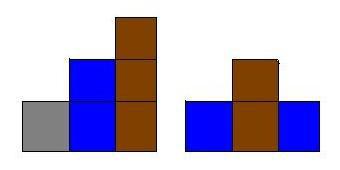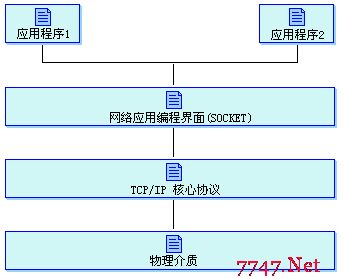BFS/DFS 模板 代码
[cpp]
#include<cstdio>
#include<cstring>
#include<queue>
#include<algorithm>
using namespace std;
const int maxn=100;
bool vst[maxn][maxn]; // 访问标记
int dir[4][2]={0,1,0,-1,1,0,-1,0}; // 方向向量
struct State // BFS 队列中的状态数据结构
{
int x,y; // 坐标位置
int Step_Counter; // 搜索步数统计器
};
State a[maxn];
boolCheckState(State s) // 约束条件检验
{
if(!vst[s.x][s.y] && ...) // 满足条件
return 1;
else // 约束条件冲突
return 0;
}
void bfs(State st)
{
queue <State> q; // BFS 队列
State now,next; // 定义2 个状态,当前和下一个
st.Step_Counter=0; // 计数器清零
q.push(st); // 入队
vst[st.x][st.y]=1; // 访问标记
while(!q.empty())
{
now=q.front(); // 取队首元素进行扩展
if(now==G) // 出现目标态,此时为Step_Counter 的最小值,可以退出即可
{
...... // 做相关处理
return;
}
for(int i=0;i<4;i++)
{
next.x=now.x+dir[i][0]; // 按照规则生成 下一个状态
next.y=now.y+dir[i][1];
next.Step_Counter=now.Step_Counter+1; // 计数器加1
if(CheckState(next)) // 如果状态满足约束条件则入队
{
q.push(next);
vst[next.x][next.y]=1; //访问标记
}
}
q.pop(); // 队首元素出队
}
return;
}
int main()
{
......
return 0;
}
#include<cstdio>
#include<cstring>
#include<queue>
#include<algorithm>
using namespace std;
const int maxn=100;
bool vst[maxn][maxn]; // 访问标记
int dir[4][2]={0,1,0,-1,1,0,-1,0}; // 方向向量
struct State // BFS 队列中的状态数据结构
{
int x,y; // 坐标位置
int Step_Counter; // 搜索步数统计器
};
State a[maxn];
boolCheckState(State s) // 约束条件检验
{
if(!vst[s.x][s.y] && ...) // 满足条件
return 1;
else // 约束条件冲突
return 0;
}
void bfs(State st)
{
queue <State> q; // BFS 队列
State now,next; // 定义2 个状态,当前和下一个
st.Step_Counter=0; // 计数器清零
q.push(st); // 入队
vst[st.x][st.y]=1; // 访问标记
while(!q.empty())
{
now=q.front(); // 取队首元素进行扩展
if(now==G) // 出现目标态,此时为Step_Counter 的最小值,可以退出即可
{
...... // 做相关处理
return;
}
for(int i=0;i<4;i++)
{
next.x=now.x+dir[i][0]; // 按照规则生成 下一个状态
next.y=now.y+dir[i][1];
next.Step_Counter=now.Step_Counter+1; // 计数器加1
if(CheckState(next)) // 如果状态满足约束条件则入队
{
q.push(next);
vst[next.x][next.y]=1; //访问标记
}
}
q.pop(); // 队首元素出队
}
return;
}
int main()
{
......
return 0;
}
[cpp]
DFS:
/*
该DFS 框架以2D 坐标范围为例,来体现DFS 算法的实现思想。
*/
#include<cstdio>
#include<cstring>
#include<cstdlib>
using namespace std;
const int maxn=100;
bool vst[maxn][maxn]; // 访问标记
int map[maxn][maxn]; // 坐标范围
int dir[4][2]={0,1,0,-1,1,0,-1,0}; // 方向向量,(x,y)周围的四个方向
bool CheckEdge(int x,int y) // 边界条件和约束条件的判断
{
if(!vst[x][y] && ...) // 满足条件
return 1;
else // 与约束条件冲突
return 0;
}
void dfs(int x,int y)
{
vst[x][y]=1; // 标记该节点被访问过
if(map[x][y]==G) // 出现目标态G
{
...... // 做相应处理
return;
}
for(int i=0;i<4;i++)
{
if(CheckEdge(x+dir[i][0],y+dir[i][1])) // 按照规则生成下一个节点
dfs(x+dir[i][0],y+dir[i][1]);
}
return; // 没有下层搜索节点,回溯
}
int main()
{
......
return 0;
}
补充:软件开发 , C++ ,




